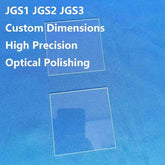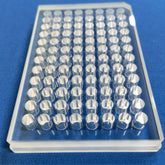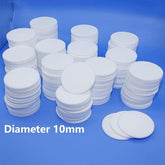Thickness requirements of quartz plates in experiments
1. The influence of quartz plate thickness
Quartz plates are widely utilized as experimental materials and are commonly used in the fabrication of essential laboratory apparatus, including beakers and measuring cylinders. The thickness of quartz plates significantly influences experimental outcomes by affecting key physical properties such as optical transmittance, thermal conductivity, reflectance, and surface tension.
2. The requirements for thickness of quartz plates
In experiments, the requirement for the thickness of quartz plates typically depends on the specific requirements of each experiment. In experiments that require the measurement of optical properties, such as transmittance and reflectance, relatively thin quartz plates must be used. For some experiments that require the measurement of thermal properties, such as temperature and heat conduction, thicker quartz plates need to be used.
In most cases, the thickness of quartz plates used in experiments should be controlled between a range of a few micrometers and several hundred micrometers. In general, the optical transparency and reflection performance of quartz plates is optimized when they are as thin as possible. However, this is at the expense of their thermal conductivity. Conversely, the thermal conductivity of quartz plates is optimized at higher thicknesses, though this comes at the expense of reduced optical transparency and reflection performance.

3. Measurement and control of quartz plates thickness
The thickness of quartz plates can be measured using a variety of methods, including microscopes, scanning electron microscopes and X-ray diffraction. There are a number of methods available for controlling the thickness of quartz plates, including chemical etching, mechanical grinding and hot pressing. Among these methods, chemical etching is the most commonly used, and it is possible to achieve the desired thickness by controlling the concentration of the etching solution and the etching time.
In conclusion, quartz plates are among the most prevalent materials in laboratories, and their thickness exerts a substantial influence on experimental outcomes. The thickness of quartz plates should be selected with consideration for the experimental requirements and controlled to ensure the accuracy of the experimental results.






